For the production of great tasting bread in a bakery, sourdough is essential. Used for a long time, it now represents a good alternative to classic yeast. It is characterized by the exceptional taste and texture it brings to baked goods.
Sourdough is also known as an essential element that ensures quality pre-fermentation.
This article provides you with the characteristics and benefits on sourdough used in baking.
Sourdough: So what is it really?
Sourdough is a living ecosystem produced by mixing water and flour. It results from the acidifying fermentation of these two ingredients and contains good bacteria. Thanks to its natural preparation and its nutritional qualities, it has become more frequently used by bakers.
Sourdough ensures good leavening of the dough for the realization of your breads and your cakes and pastries as well. If it is refreshed regularly by adding water and flour, you can store the dough for a long period of time at room temperature for daily use, or in the refrigerator if used less frequently.
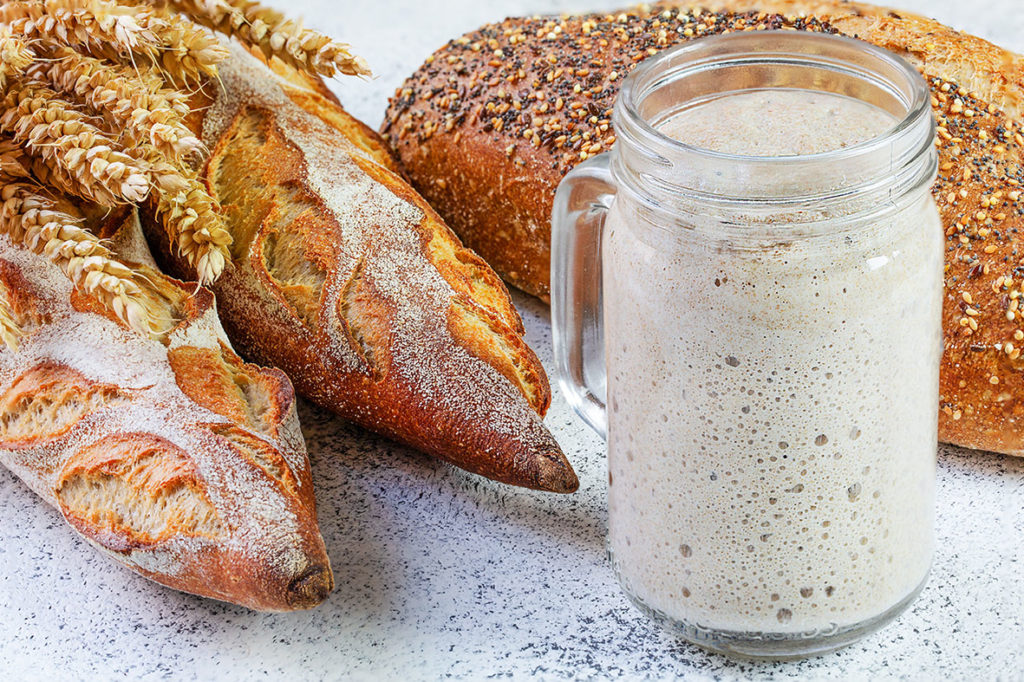
It is important to distinguish the differences between sourdough and yeast to ensure best product results. Leaven is a living material, made from natural products. Whereas yeast is a microscopic fungus that can be found in fresh or dry form in supermarkets, for example.
What is it made of?
To prepare sourdough, you only need two natural products:
- Water
- Flour
Sourdough itself is obtained due to the naturally occurring ferments and bacteria in the environment. In preparation, it is possible to add other ingredients such as honey or sugar, to create unique recipes.
What equipment to produce sourdough for your bakery and pastry preparations?
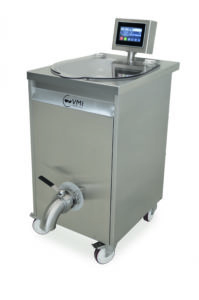
Fermenter for craft bakery up to 80 kg of liquid to semi-pasty sourdough.
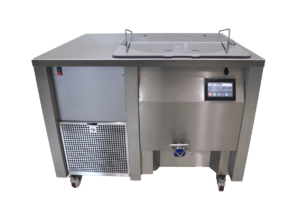
Fermenter for industrial bakery up to 200 kg of liquid to semi-pasty sourdough.
What is the story behind this product?
Did you know that sourdough has been used since 3000 BC? The testimonies confirm that sourdough was an accidental creation! A piece of dough that had been left out for several hours and had naturally developed wild yeasts and bacteria was accidently added to the dough and voila, the first leaven was born!
In the 20th century, with the development of yeast on an industrial scale, as well as the consumers growing demand for bread with a white crumb, bakers were encouraged to opt for using yeast, which was both quicker and simpler during production.
However, trends are changing. Consumers, in their quest for natural products, now prefer breads with nutritional qualities and as a result, a majority of bakers have now decided to return to the production of sourdough bread.
What are the different types of sourdough?
There are no real varieties of sourdough because it is a living ecosystem. However, we can mention several types that differ in their preparation and composition:
- Natural sourdough: a natural product, in liquid or paste form, that can be obtained without adding yeast.
- Mother-dough: sourdough that is reserved to refresh a larger quantity of sourdough.
- Ready-to-use sourdough: natural sourdough obtained after the last refreshment.
- Sourdough with starter: the result of a mixture of water, flour and wild yeast. It can be in liquid or paste form.
- Commercial living sourdough: can be obtained in a liquid form from an industrial.
- Aromatic devitalized sourdough: a ready-to-use sourdough, in powder form, that can be kept for an extended period of time.
Starters – a solution to accelerate the preparation of sourdough?
Typically, it takes several days to get an active leaven ready to make bread. Starters facilitate and accelerate preparation to less than a day. These micro-organisms are generally composed of certain strains of lactic bacteria and/or yeast that allow the production of a sourdough quite close to spontaneous sourdough. However, their shelf life is limited to just a a few refresh uses.
In general, it is possible to opt for a simple starter or a mixed starter, in liquid and/or powder form. The simple starter is made up of strains of lactic acid bacteria, which are added during the preparation of the leaven. The mixed starter, on the other hand, is composed of a simple starter that is mixed with wild yeast.
The most influential elements in the making of sourdough
For the preparation of sourdough and development of an active microbiology, there are some influential factors to consider:
- The type and quality of flour
Whole meal flours provide a better concentration of microorganisms and an appropriate sugar content. White flours (less whole meal and therefore more refined) are less rich in microorganisms and are as a result, less effective for fermentation.
Rye flour tends to give more acidic sourdough results than wheat flour. It is also possible to use other types of flour such as spelt, buckwheat, corn, rice… - The quality of the water and the hydration rate of the sourdough
Some of the possible water options to use include spring water, apple skin or raisin soaking water (only to start a sourdough, not to refresh it) or tap water. When using tap water, in order not to kill the bacteria, the water should be left to stand for a few hours while the chlorine evaporates.
For a liquid leaven, the hydration rate is about 100 to 150% of the flour weight. When the hydration is high, you get more roundness, and when it is low, more pungent acidity. - The fermentation temperature
The temperature generally recommended is between 24°C and 35°C. An increase in temperature brings more roundness, while a decrease in temperature accentuates the acidity.
- The use of salt
Some professionals add a little salt to their sourdough to stabilize the mixture over time and ensure a longer conservation.
Other influential elements in the making of sourdough
Other elements can also be influential such as the addition of sweetening ingredients, the percentage of mother-dough used, and the cycle time of the refreshment.
To ensure consistency, it is preferable to keep the leaven two to three days in a cold place (5-10°C) and to refresh it regularly.
Sourdough or liquid leaven?
If pasty sourdough is simple to make (a ball of dough that is kept cold) it does not allow the control of the process as the liquid leaven, nor its regularity.
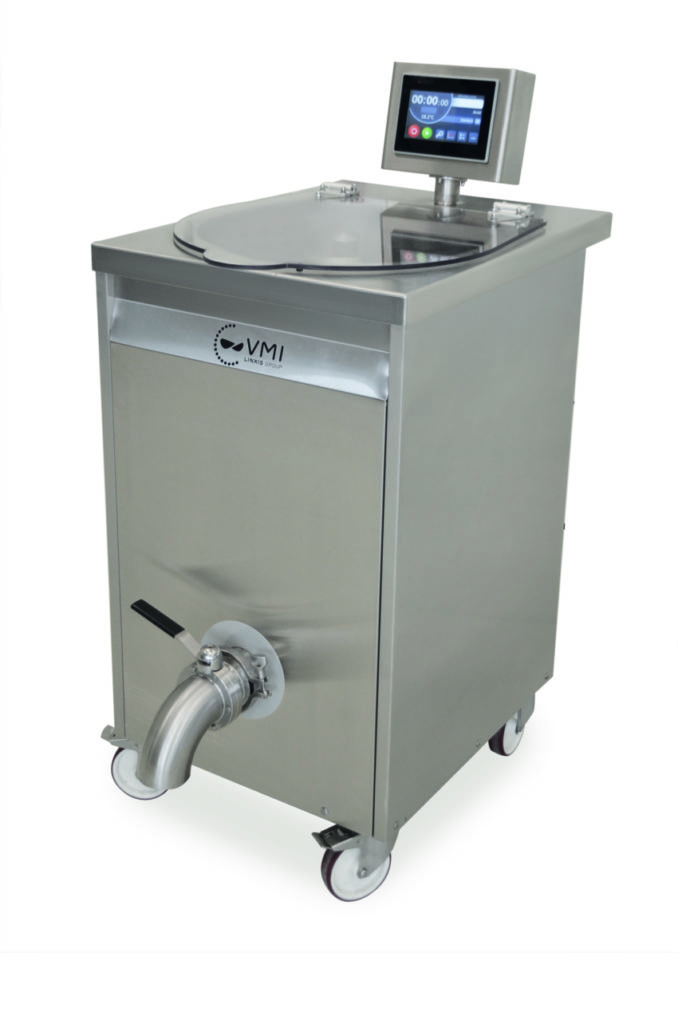
With liquid sourdough, it is possible to dose the exact quantities, to cool and heat in a very precise way (thanks to professional fermenters), and thus to guarantee a process for a regular result. Some sourdough machines offer a calculator where you enter the desired quantity of ingredients, and the equipment precisely calculates the process to be implemented: temperature rise for the development of the sourdough, agitation and thermal homogenization, maturation, cooling, conservation.
Other aspects also work in favor of liquid sourdough:
- Mixing the ingredients is easier
- The fermentation time is shorter
- The fermentation temperature is more homogeneous
- The product has ability to be pumped and, as a result, easier to store at the desired temperature
- The crumb is softer and more honeycombed
- The flavor profile is more rounded/lactic
Why use this product?
Using sourdough has many advantages, including taste and health benefits.
Sourdough allows bakers to express full creativity. Depending on the ingredients and the parameters chosen, it helps to create recipes that are both specific and varied.
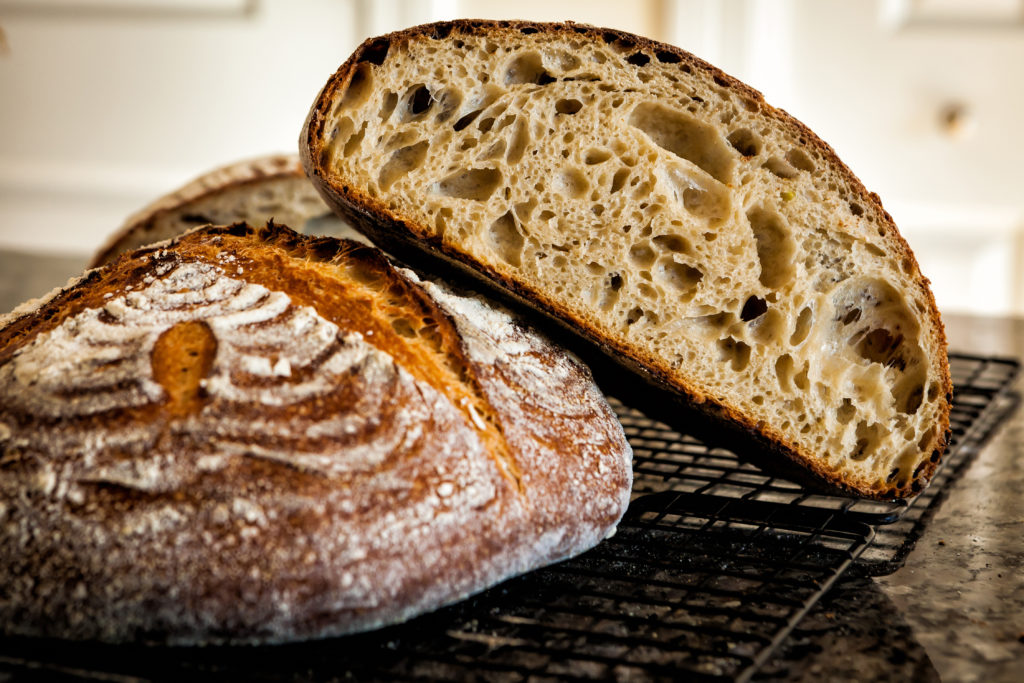
From a taste point of view, the product obtained is more aromatic, with a slightly acidic and more exquisite taste. The leavening allows to the final product to obtain a thick crust, and a cream-colored crumb with irregular bubbles. It also offers more chewiness.
Sourdough favors the production of fibers called exopolysaccharide, which gives more softness to the products and slows down their staling.
In terms of health, the bacteria that makes this ferment, activate the breakdown of starch. This is done before it reaches the digestive system, which facilitates its digestion. It favors the absorption of certain vitamins and the neutralization of phytic acid (the cause of bone demineralization).
Because of their high fiber content, sourdough baked goods are recommended for people with blood sugar management problems or heart disease.
Moreover, the sourdough fermentation process improves nutritional intake as well as produces amino acids for more flavor, and offers good bioavailability of minerals.
Sourdough and yeast, a difference in taste and much more
Sourdough bread differs from bread made with yeast as it is rich in lactic and acetic acids, giving it a very distinctive taste with a touch of acidity.
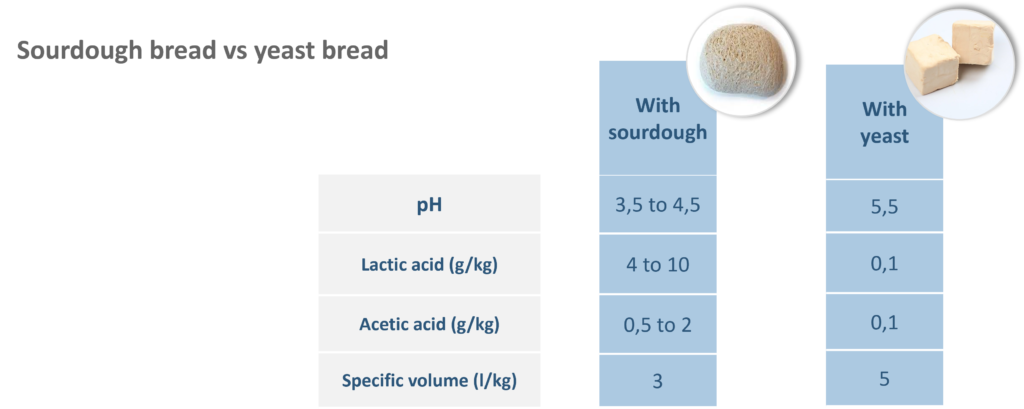
Unlike yeast, sourdough can be used to create an infinite number of formulations by varying the different settings.
Finally, the use of sourdough in the manufacturing of a bakery product slows down the staling process and reduces the amount of preservatives.
Above all, sourdough is a matter of signature and authenticity in the search for quality. If the baker is satisfied with his own method, in terms of quality and consistency, then it is the right one!
